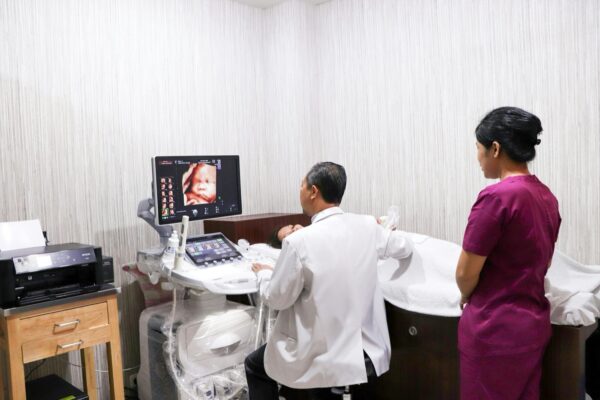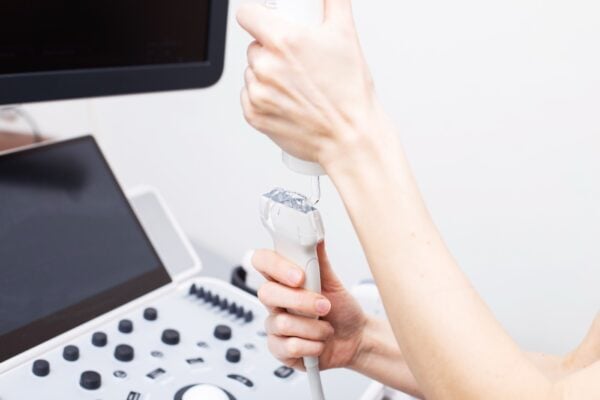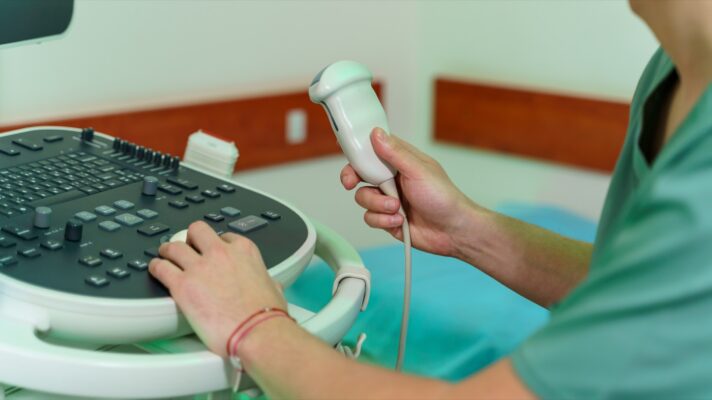Maximizing Profit: Revenue, Costs & Growth Strategies for Elective Ultrasound Studios
The elective ultrasound industry is thriving. Across the country, parents are lining up for a first look at their babies through stunning 3D and 4D images—an experience that’s both emotional and unforgettable. For entrepreneurs, that emotional connection translates into a powerful business opportunity. But the question remains: how profitable is an elective ultrasound business, and what strategies ensure sustainable growth?
Whether you’re a current studio owner aiming to increase revenue or a new entrepreneur exploring how to open a 3D/4D ultrasound business, understanding the balance between costs, pricing, and marketing strategy is key. Let’s explore how today’s top-performing ultrasound studios are maximizing profits while creating unforgettable keepsake experiences for families.
The Financial Landscape of Elective Ultrasound
Market Demand and Growth Potential
According to Grand View Research, the global 3D and 4D ultrasound market is projected to grow at over 6% annually through 2030. This growth is driven by rising interest in non-diagnostic, keepsake imaging and advanced portable ultrasound machines. The U.S. alone has seen a surge in small business openings in this niche—especially among trained sonographers and entrepreneurs who invest in Ultrasound Business Training Programs.
Most established studios operate within one of three models:
- Standalone Studios – Fixed locations offering high-end packages and immersive environments.
- Mobile Ultrasound Services – Bringing 3D/4D scans directly to clients’ homes or baby showers.
- Hybrid/Franchise Models – Combining physical studios with mobile teams and online appointment systems.
Each model has its own cost structure, but the key to profit lies in one metric: utilization rate—how many of your appointment slots are filled each week. A studio operating at 70–80% capacity consistently achieves healthy returns.
Breaking Down Startup and Operating Costs

Launching an elective ultrasound business typically requires an investment between $65,000–$120,000, depending on your market, location, and the equipment you purchase. Here’s a simplified breakdown of common startup and ongoing costs:
- 3D/4D Ultrasound Machine: $25,000–$65,000 for premium HD systems.
- Leasehold Improvements: $10,000–$20,000 to create a comfortable, family-friendly studio.
- Marketing and Branding: $5,000–$10,000 for website, SEO, and launch campaigns.
- Training and Certification: $10,000–$15,000 (through reputable programs like Ultrasound Trainers).
- Operating Costs: Rent, utilities, insurance, and staffing ($2,000–$6,000 monthly).
“Your ultrasound machine is the heart of your business—but your marketing strategy is the lifeblood that keeps it alive.”
Keeping overhead lean is essential, especially in the first six months. Consider starting with part-time staff, digital booking tools, and mobile options before expanding into full-time operations.
Revenue Streams and Profit Margins
Average Session Pricing
Most studios charge between $85 and $200 per session, depending on session length and image quality. Premium packages—offering longer scan times, heartbeat animals, and printed photos—can command $250+. A busy studio averaging 25–35 sessions weekly can generate $10,000–$25,000 in monthly revenue.
Additional Income Streams
- Heartbeat Keepsakes: Plush animals with recorded fetal heartbeat (profit margin up to 70%).
- Digital Media Packages: USB drives, online galleries, and printed photo bundles.
- Add-On Scans: Gender reveal, re-scan discounts, or special “sneak peek” sessions.
- Retail Sales: Maternity apparel, announcement props, and baby gifts.
To maximize profitability, build tiered packages that encourage upgrades—clients often choose mid or top-tier bundles when they perceive emotional value.
Smart Pricing and Value Creation
Pricing isn’t just about covering costs—it’s about positioning. Many studio owners make the mistake of underpricing services to attract clients. However, perceived value plays a powerful role in this niche. A higher price point paired with exceptional service and ambiance builds trust and desirability.
Tips for Profitable Pricing
- Bundle popular services into premium “experience packages.”
- Offer limited-time gender reveal or holiday specials to boost off-peak bookings.
- Use loyalty programs to retain repeat customers through pregnancy stages.
- Track conversion rates from leads to bookings and optimize accordingly.
As a rule of thumb, aim for a 70% gross margin on your ultrasound services and at least 50% margin on retail items. Regularly review pricing based on your competition and demand.
Marketing That Drives Growth
Once your costs and pricing are optimized, marketing becomes your growth engine. Most successful elective ultrasound businesses thrive on local visibility, digital reputation, and emotional storytelling.
Proven Ultrasound Business Marketing Tips
- Local SEO: Optimize your Google Business Profile with images, reviews, and keywords like “3D/4D Ultrasound near me.”
- Social Media: Use Instagram Reels and TikTok videos of reveal reactions—these often go viral.
- Referral Partnerships: Collaborate with OB offices, maternity boutiques, and doulas.
- Email and SMS Loyalty Campaigns: Follow up with clients around milestones and upcoming trimesters.
- Community Engagement: Sponsor local baby fairs or host free “Meet the Sonographer” days.
“In the elective ultrasound business, your clients aren’t just buying images—they’re buying a memory they’ll cherish for life.”
Marketing is not a one-time task—it’s a system. Build monthly campaigns, track ROI, and continually test what messages drive the most engagement.
Scaling Through Franchising and Expansion
After achieving local success, many owners look toward expansion—either opening a second studio, going mobile, or even developing a franchise model. Franchising can be lucrative but requires proven operational consistency and brand standards.
Options for Growth
- Open a Second Location: Ideal if you’ve saturated your market and have a strong referral base.
- Launch a Mobile Ultrasound Unit: Adds flexibility and opens new audiences (baby showers, home visits).
- Develop a Franchise Model: Partner with Ultrasound Trainers or franchise consultants to structure a scalable system.
Key Metrics Every Studio Should Track
Data-driven decision-making turns good studios into great ones. Monitoring your metrics helps identify bottlenecks and new growth opportunities.
Essential KPIs
- Average Revenue per Appointment
- Monthly Booking Rate
- Customer Acquisition Cost (CAC)
- Client Lifetime Value (CLV)
- Profit Margin per Service
- Marketing ROI by Channel
Studios that track performance monthly and adjust pricing, marketing, or hours accordingly often see profits rise by up to 35% within a year.
FAQs About Elective Ultrasound Profitability
How much can a 3D/4D ultrasound studio make per year?
A well-managed studio can generate between $120,000–$300,000 in annual revenue, with net profits ranging from 25–45%, depending on efficiency and market size.
What is the biggest expense?
Equipment and rent typically account for the largest portion of fixed costs. However, marketing spend often drives the greatest returns when managed effectively.
Is franchising a good path?
Yes—once your systems are established and you have repeatable success. Partnering with experts like Ultrasound Trainers can streamline the process.
Final Thoughts
The elective ultrasound business blends technology, emotion, and entrepreneurship in a uniquely rewarding way. Success doesn’t come from equipment alone—it’s driven by smart financial planning, marketing, and a genuine passion for helping families connect with their unborn child.
As the industry grows, the opportunities to expand, innovate, and franchise are endless. Whether you’re just starting out or refining an existing studio, remember that your clients aren’t just visiting for images—they’re coming for an experience. Deliver that consistently, and profitability will follow.
Are you planning to start your own 3D ultrasound business? Share your thoughts and challenges in the comments below! If you found this guide useful, help others by sharing it on social media.













